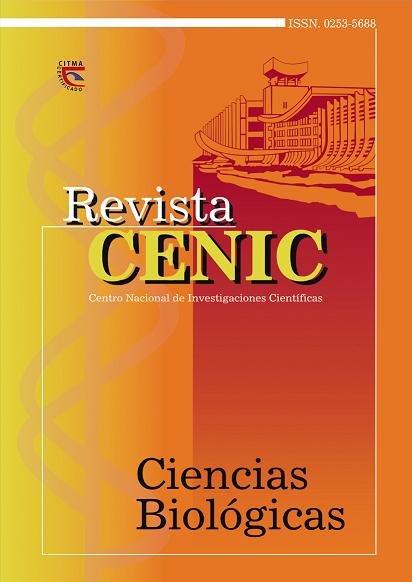Evaluación de la percepción auditiva con el sistema Medicid 3E
Abstract
There is a negative component of the event related potential (ERP), labelled as mismatch negativity (MMN) which is typically elicited
by perceptual differences between two acoustic stimuli . Because of its characteristics and functional meaning this component can be useful to study central auditory processing of complex stimuli such as speech. The present study was designed to implement the MMN technique in the Cuban MEDICID 3E system, providing normative data for future research. For this reason, we used the MMN classic paradigm, presenting a train of repetitive acoustic stimuli (standard) in which at random a different stimulus (deviant) occurs. The stimuli were 1000 Hz (standard) and 1200 Hz (deviant) brief tones delivered through earphones at 80 dB SL . All recordings were made with a digital 24 channel EEG system (MEDICID 3E) connected to a computer with the psycophysiological stimulator MINDTRACER. In all subjects the ERP showed an early negative component (Nl wave) around 100 ms followed by the MMN wave around 200 nis. The NI wave was elicited by both deviant and standard stimuli while the MMN wave was obtained only to the deviant stimulus. We conclude that the classic paradigm implemented in the MEDICID 3E system was useful to record the MMN component in normal subjects. The
negativity recorded here showed all functional characteristics as well as the topographical distribution described by other authors for the
MMN component. The normative data obtained constitutes a first step for future applications in the study of learning disabilities and central deficits of complex auditory processing.
Downloads

Downloads
Published
How to Cite
Issue
Section
License
Copyright (c) 2002 Copyright (c) 2002 Revista CENIC Ciencias Biológicas.

This work is licensed under a Creative Commons Attribution-NonCommercial-ShareAlike 4.0 International License.
Los autores que publican en esta revista están de acuerdo con los siguientes términos:
Los autores conservan los derechos de autor y garantizan a la revista el derecho de ser la primera publicación del trabajo al igual que licenciado bajo una Creative Commons Atribución-NoComercial-CompartirIgual 4.0 Internacional que permite a otros compartir el trabajo con un reconocimiento de la autoría del trabajo y la publicación inicial en esta revista.
Los autores pueden establecer por separado acuerdos adicionales para la distribución no exclusiva de la versión de la obra publicada en la revista (por ejemplo, situarlo en un repositorio institucional o publicarlo en un libro), con un reconocimiento de su publicación inicial en esta revista.
Se permite y se anima a los autores a difundir sus trabajos electrónicamente (por ejemplo, en repositorios institucionales o en su propio sitio web) antes y durante el proceso de envío, ya que puede dar lugar a intercambios productivos, así como a una citación más temprana y mayor de los trabajos publicados (Véase The Effect of Open Access) (en inglés).














